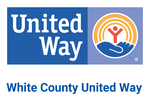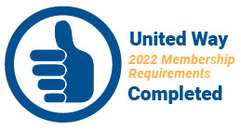|
One of the most difficult aspects of overcoming addiction is the drug cravings. These cravings are caused by the addiction induced changes in brain circuitry and chemistry, lasting weeks or months after substance use has stopped. One way to overcome these cravings and improve treatment outcomes is medication assisted treatment or MAT. The US Surgeon General considers MAT as the gold standard of opioid use disorder treatment. (https://addiction.surgeongeneral.gov/) MAT has been proven successful in reducing relapse, and criminal activity, while increasing survival, treatment compliance, and employment--allowing the person to focus on aspects of life that were neglected during addiction.
Medication assisted treatment is not limited to opioid addiction. It has been around for a long time. For example, nicotine patches are a form of MAT often used in smoking cessation programs to alleviate the physical cravings for tobacco use. MAT is not a cure for opioid addiction, but can be an effective component of treatment when combined with behavioral therapy and social support. MAT is carefully regulated and only administered by certified medical personnel in controlled clinical settings. There are three different types of medication assisted treatments for opioid addiction. Methadone is the oldest and most common form of MAT. It has decades of proven success in helping people overcome addiction. Individuals taking methadone are required to receive daily liquid doses at a methadone clinic. After a certain length of treatment, patients can receive take home doses for up to two weeks. Naltrexone is an office-based treatment used to treat opioid and alcohol abuse. It can be administered as a daily pill or monthly injection (Vivitrol). Naltrexone requires 7 to 10 days of drug abstinence before beginning treatment. One danger of this treatment is that if the patient takes an opioid, they will not feel high but can still overdose. Buprenorphine (Suboxone) is another office-based treatment that blocks opioids while reducing withdrawal risk. It can be administered as a daily dissolving tablet, cheek film, or six-month implant under the skin. Health care providers must be certified to administer it in a certified opioid treatment program. There are several MAT clinics in Lafayette. At press time, they were Clean Slate, Innovative Medicine, Limestone, Riggs Community Center, Sycamore Springs and Valley Oaks. More information about each can be found at https://www.logansportmemorial.org/UserFiles/File/Community%20Resource%20Guide.pdf The minimum length of MAT is a year but varies from person to person. Brain circuits that have been altered by prolonged substance abuse take time to recover. Some patients may require MAT for the rest of their lives. At this time, there is no known MAT for cocaine, methamphetamines or benzodiazepines. Although MAT is successful for many, it is not without controversy. Some insist MAT just substitutes a new drug for the old one and that some forms of MAT are easily diverted and misused. Others object to the expense of MAT. A monthly Vivitrol injection can cost up to $2000 per dose. Methadone costs about $20 a day. Some addiction specialists believe MAT should only be used in those who are resistant to other forms of treatment. There is even debate among those in the recovery community as to whether MAT counts as sober living. There are many forms of treatment for substance abuse. Each person must be evaluated by professionals to determine which course of action will best meet individual needs. MAT can be a beneficial form of treatment for those overcoming opioid addiction.
0 Comments
Your comment will be posted after it is approved.
Leave a Reply. |
AuthorLynn Saylor is the AmeriCorps member working with the United Against Opioid Abuse Initiative alongside the White County United Way. She is a major facilitator of the United Council on Opioids serving White County and a regular contributor to local media. Archives
October 2020
Categories
All
|

 RSS Feed
RSS Feed
